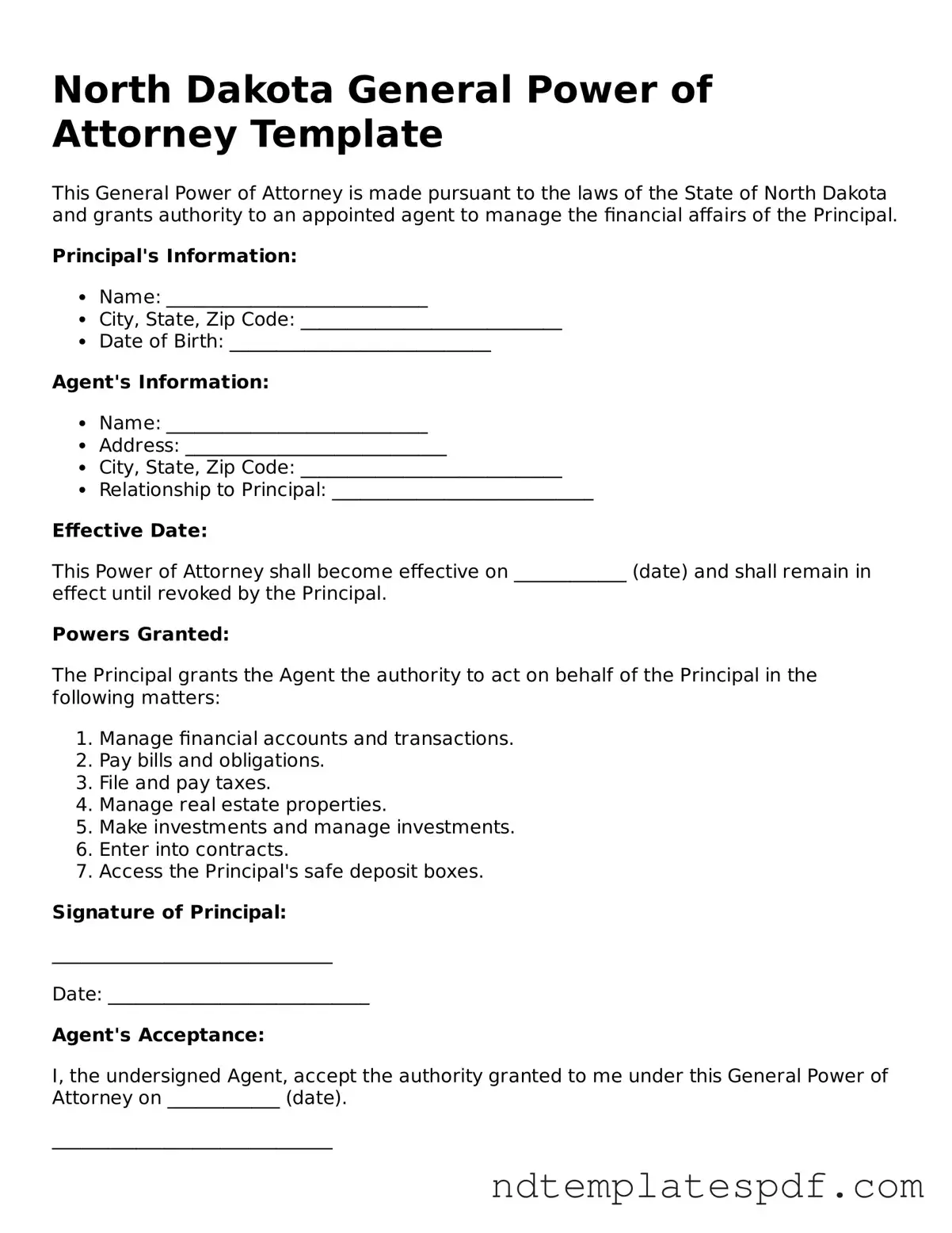Legal North Dakota General Power of Attorney Document
A North Dakota General Power of Attorney form is a legal document that allows one person to appoint another to manage their financial and legal affairs. This arrangement grants the designated individual the authority to make decisions on behalf of the person who created the document. Understanding its importance can help ensure that your interests are protected when you are unable to act on your own behalf.
Fill Out Document Now
